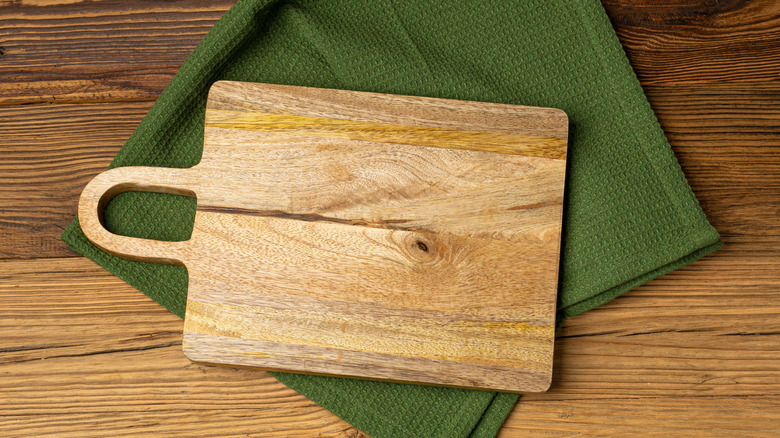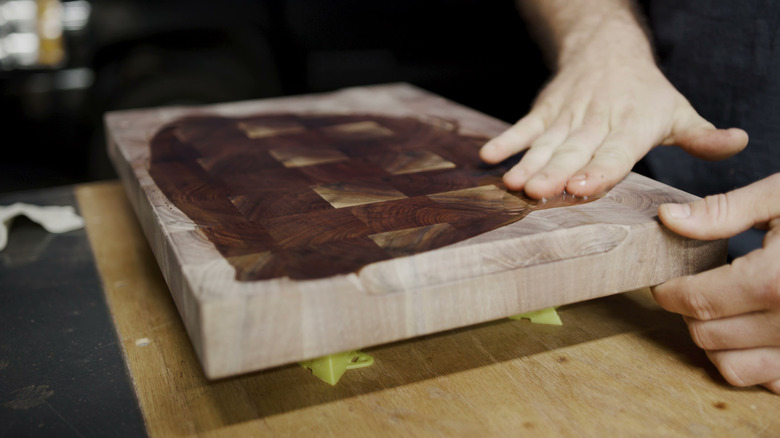The Harsh Abrasive You Should Never Use To Clean A Wood Cutting Board
Long before fancy chef knives and Instagram-worthy kitchens, people carved their meals on whatever wood they could find, often the same slab they'd used to serve and sometimes eat on. And somehow, years later, we're still reaching for the same material in our kitchens. Wooden cutting boards are witnesses of our daily rituals, from the garlic you crushed in a hurry to the lemon you sliced for late-night tea. And because it feels so sturdy and timeless, we often reach for the harshest cleaner in the cabinet the moment it needs a refresh. But there's a difference between caring for something and attacking it, and when it comes to wood, that line matters. Before you unintentionally sabotage your favorite board, remember never to use steel wool to clean it.
We get it, steel wool promises to lift off lingering residue and give your board a deep clean. But instead of cleaning wood, it can actually wound it. Those tiny fibers scrape deep grooves into the surface, harming the protective finish. And once scratches appear, your board starts aging in dog years. The grains split open, creating perfect hideouts where bacteria can thrive. No wonder you should stop using cracked wooden cutting boards if you have any. Worse still, wood is absorbent. Those scratches invite even more moisture in, which eventually leads to warping. And we can't skip the fact that steel wool sheds. Those metal bits can settle into the grain and make their way into your food. So, yes, steel wool might look tough, but your cutting board deserves kindness.
How to maintain your wood cutting board the right way
To best clean a wooden cutting board, you'll need a soft sponge, a gentle dish soap, and some warm water. Pour a few drops of dish soap onto the board and give its surface a light scrub. Make sure you flip the board over and wash the back too, because meat and vegetable juices can sneak underneath.
When you rinse it off with warm water, pat it completely dry with a clean kitchen towel. Wood holds onto moisture like a secret, and the longer water sits, the faster your board cracks or starts developing funky odors nobody wants near their food. Now, if you spot stains or your board has a scent that's overstayed its welcome, lemon can help, but not on its own. Lemon by itself is too acidic, and it may dry out the wood. So, pair it with salt. The salt does the gentle scrubbing, and the lemon lifts the smell without stripping your board's soul. After cleaning, wash and pat dry again.
Make sure you don't skip oiling. It's a part of wood cutting board care. Apply a tiny bit of olive oil or any food-grade mineral oil and let it soak into the board. Once done, blot off extra oil. It'll keep the board from drying out, and it's far less likely to crack on you mid-chop. Lastly, wash your board after every use and give it a thorough clean once a month. A little consistency goes a long way with wood. Treat it well, and it'll return the favor every single day.

